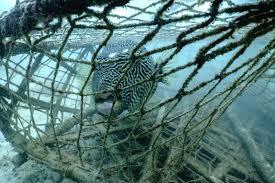Introduction
When we talk about ocean pollution, most people immediately think of plastic straws, oil spills, or microplastics. But there is an invisible enemy lurking in the depths of our oceans, causing slow, silent destruction — ghost fishing gear. This term refers to abandoned, lost, or discarded fishing equipment that continues to trap and kill marine life long after humans have left it behind. While largely unknown to the general public, ghost fishing is one of the deadliest threats to our seas.
What is Ghost Fishing Gear?
Ghost gear includes nets, lines, crab pots, and fish traps that are accidentally lost or deliberately discarded in the ocean. Because these materials are often made from strong synthetic fibers like nylon, they can persist for decades. Even without human control, these "phantom" fishing tools continue to entangle fish, sea turtles, dolphins, seals, and even whales.
What Can Be Done?
-
Tracking and Retrieval Programs: GPS-tagging fishing gear and organizing retrieval operations can help.
-
Biodegradable Gear: Nets and traps made of materials that break down in water can reduce long-term harm.
-
Stronger Regulations: Governments can enforce rules for gear disposal and lost equipment reporting.
-
Public Awareness: Campaigns to educate both the fishing industry and consumers can drive demand for sustainable practices.
Conclusion
Ghost fishing gear may not be a term you hear often, but it is a massive and growing threat to ocean life. As global citizens, understanding and addressing this issue is crucial to protecting marine ecosystems. The next time we talk about saving our oceans, let’s not forget the silent stranglers lurking below the surface.

